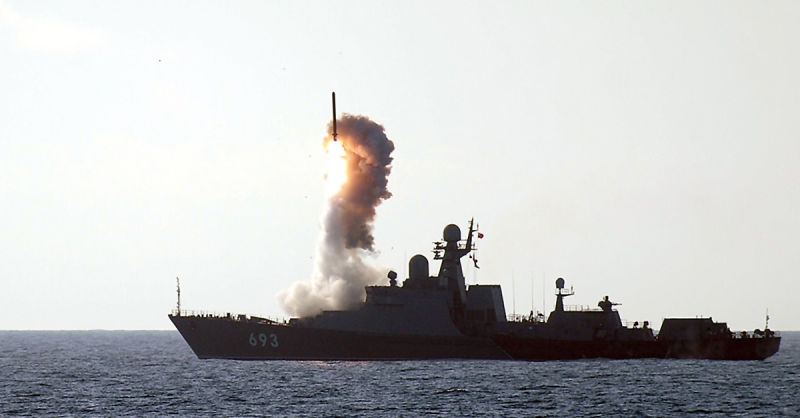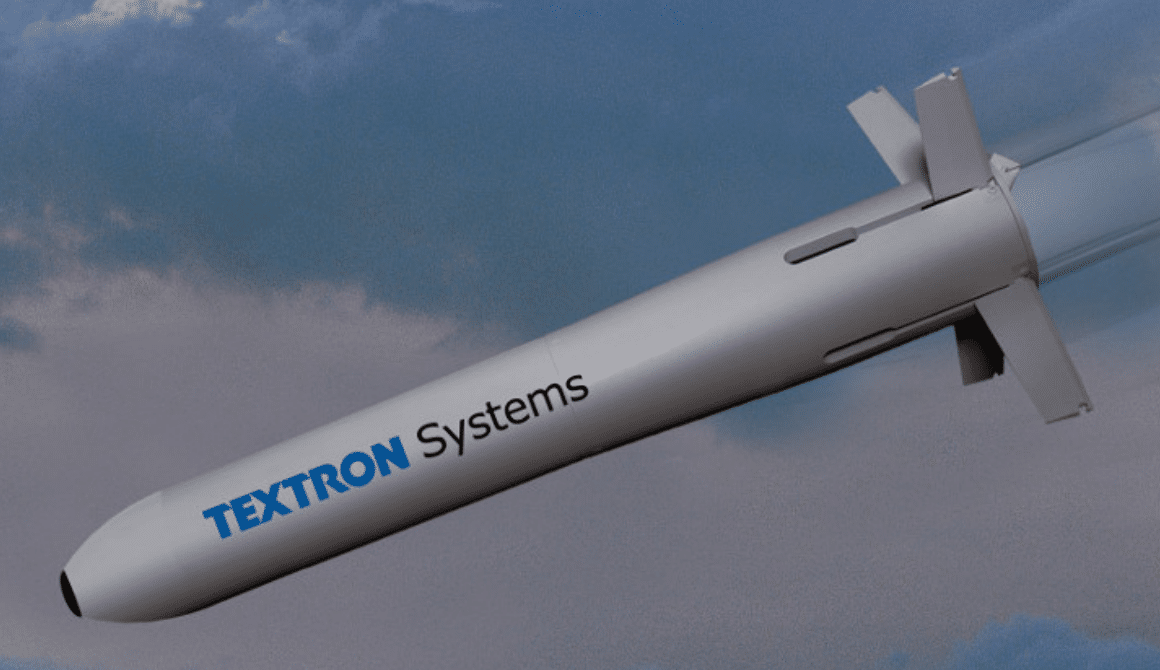2547Views 13Comments

Is Pakistan developing a naval launch system?
In its latest annual publication, the Pakistan Ministry of Defence Production (MoDP) disclosed that the Directorate General of Munitions Production (DGMP) was tasked with “the indigenous developing of [one] ship-borne system with [one] Land Attack Missile and [one] Anti ship Missile.” Development of this system is scheduled for completion by October 2018.
Comment and Analysis
It is not clear exactly what the DGMP had been tasked with developing, but it could be an indication of a naval launch system. If it is a launcher, then it will not literally carry both an anti-ship missile (AShM) and land attack cruise missile (LACM) simultaneously, but be long and wide enough to carry either kind. In the Pakistan Navy’s case, that would mean developing a launch system compatible for the Babur LACM and C-802 AShM.
As for the purpose of this system, it is not clear if by “shipborne” the MoDP is referring to surface warships or to surface warships and submarines. Specifics of this program notwithstanding, it is certain that the Pakistan Navy is seeking to build a deterrence capability, and submarines – such as the eight ships recently ordered from China – will serve a central role in that regard. One could reasonably speculate that DGMP’s naval program could be in reference to the Pakistan Navy’s forthcoming submarines.
The alternative idea would be in reference to a surface warship, such as frigates and/or corvettes. While not impossible, this is unlikely to be the case. Granted, Pakistan could draw in inspiration from Russia’s method of arming relatively lightweight surface combatants – such as corvettes – with LACMs.
When it militarily entered Syria in 2015, Russia deployed its Caspian Sea Fleet to launch 3M54 Klub/Kalibr LACMs. With a displacement of less than 1000 tons, the Buyan M is capable of launching Kalibr-NK LACMs using on-board vertical launch system (VLS) cells.
It does not appear that the Pakistan Navy is planning to utilize its surface warships (the latest of which are anti-submarine warfare capable Zulfiqar-class frigates) for deterrence purposes.
The sole workhorse of the Navy’s nuclear deterrence force will likely be comprised of conventional submarines. With the purported value of its purchase from China being $4-5 billion U.S., and the inherent low-detectability and low-observability advantages of conventional submarines, one would expect to see Pakistan prioritize a sub-surface deterrence element above that of surface ships. In-house development of the launch system – torpedo tubes in the case of submarines – would comfortably align with this idea.
The October 2018 deadline will also overlap with the submarine acquisition from China. While it is not known when these submarines will enter production, it is possible, if not likely, that only a portion of the forthcoming eight submarines will be equipped for the deterrence role. The batch slotted for production in 2018 could be among those designated to carry nuclear-tipped Babur LACMs.



13 Comments
by Mohsin E.
There’s a very good article on War is Boring about US supercarriers becoming obsolete by 2030s (linked below). What that really means, is that ALL surface vessels are becoming more and more obsolete (since they’re ALL used in the defense of super carriers.) Hypersonic threats, whether they are ASBMs or cruise missiles are exceedingly difficult to intercept, and for the foreseeable future the only defense against them is to stay out of their range, which negates the whole point of the surface vessel… The reco made by the cited analysts is investing in the sub fleet as opposed to the surface fleet.
The USN is the most “traditional” of all the service branches (according to the US Army’s own manuals) and is fighting this recommendation, even though it admits that it’s surface fleet can no longer threaten a near-peer foe on Day 1, within range of A2/AD… The article is also a very good example of the traditional biases within the Navy, which keeps begging for toys that aren’t needed, just because it wants them, even though it knows they aren’t useful anymore…
https://warisboring.com/aircraft-carriers-could-be-obsolete-in-the-2030s-even-with-f-35s-ea883b0f509f#.sqigotiew
by Hashim Rasheed
Its about time. If the system is being developed locally with indigenous expertise, it should be for both surface ships and submarines.
by Baber Ali
To all readers 8 Ships= 8 subs
by Bilal Khan - Quwa
Does this mean that the bulk of ASW will eventually need to be done by MPAs? If so – then couldn’t one argue that this revives the need for surface combatants capable of packing AAW – so as to create room for one’s sub-surface assets? For an A2/AD force like Pakistan, would it be unreasonable to suggest at least 1500-2000 ton corvettes, provided one can get MR/LR SAM capable of fitting onto those ships? Or would it simply be a waste, considering one could take those funds and invest in a land-based LR/V-LR SAM and/or land-based long-range fighters instead?
by Syed Arbab Shah
“There’s only 2 types of ships….Submarines and Targets”
Q. May I assume that Pakistan has mastered “Cold Launch” technology which is critical and more important, If our submarines plan to remain undetected?
by Bilal Khan - Quwa
What do you think of VHF and EHF radars? Are they poised to be a factor in sub-surface operations? If submarines can communicate in a network, and detect other vessels using both sonar and radar (as well as use guided weaponry), it’d radically change the battlefield.
by Mohsin E.
High frequency VHF/UHF/EHF signals don’t travel in salt water, so subs are forced to surface in order to use this spectrum, which defeats the purpose of having a submarine…
Instead you need VLF/ELF, very low frequency signals that can penetrate salt water. The challenge is freely communicating with the submarine without making it expose itself. This is where innovation is required. If you can do that (which is a VERY hard problem to solve) then the rest is gravy… Satellites/Aircraft can then be used to direct and guide subs and their long range munitions over land and water without sacrificing the sub’s stealth advantages. That will indeed change the naval battlefield.
There’s a wiki article on the subject:
https://en.wikipedia.org/wiki/Communication_with_submarines
by Matthys Jacobs
If Pakistan managed to build a multi-role Vertical launch system such as a non western equivalent to the Mark 41 then it would have a highly marketable product.
Denel of South Africa originally wanted to develop something similar but lacked the funds to do so, it had to settle for a 32 maximum cell VLS with 8 being the core per cell. Unfortunately they were not able to quad pack but the idea was to adapt it to allow for surface to surface capable launches and have the same VLS for ground and surface ship launches.
by Bilal Khan - Quwa
Indeed, but in all likelihood Pakistan will acquire such a solution from China. In fact, the Chinese do have a Mk41-like VLS system under development, one that can be quad-packed with a new ESSM-like SAM (i.e. DK-10). This is assuming new fully capable surface warships are planned for the pipeline.
by Matthys Jacobs
It’s a pity that Pakistan would not approach Denel and South Africa, it could lead to a significant amount of tech transfer and allow both countries to compete against China. Similar to the relationship between Israel and India.
by 321
Mohsin, an aircraft carrier, as the name implies, transports jets from one place to another. The US uses these to invade other countries. There’s a reason why they don’t simply just send out long range aircraft across the world. It’s b/c ACs are convenient. Instead of traveling all the way back to the US or even to a base on foreign soil, you have a resupply and maintenance facility near you and independent of foreign influence. So no, unless you have no plans to threaten other nations with invasion, an aircraft carrier is not obsolote.
Your comment mentioned that the sub slipped past not only the surface ships but the submarine as well. So then is the submarine now useless as well? Obviously, you don’t believe it is. The goal therefore is not to scrap ACs and other surface ships altogether but to come up with ways to neutralize enemy defences.
by Mohsin E.
A platform can become obsolete even if its mission profile does not. If the platform is no longer capable of fulfilling said task, it is obsolete. Subs can still fulfill most of their tasks (they are not limited to hunting other subs) the ACC can not (it’s only purpose is to get it’s ACs to the combat theater.)
One day, tanks (for example) might be obsolete due to a new technology. That wouldn’t mean their mission profile would cease to exist, it just means that they are no longer capable of fulfilling it.
by 321
This is a bit late but you still fail to see the point.
Definition of obsolete: The general meaning is “out of date” and for our purposes specifically, whether or not it’s still useful.
So let’s go over this again. The goal of an ACC is for power projection, in other words, invasion (specifically, air assaults) where the target is far away. At the moment, there is no other conventional means of doing so except for using bases in countries close to your target. However, an ACC has its pros which you should be able to figure out.
Therefore, for its purpose of existence an ACC is NOT out of date and is STILL useful. The only way an ACC will become “obsolete” is if a better way to transport ACs comes along. “Better” could mean cheaper, faster, safer, etc or any combination of them.
So does this mean that in response to a threat, you simply get rid of ACCs and lose the ability to fulfill your goals? NO! That’s complete nonsense. What it means is that you need to find a way to neutralize said threat.